Choosing bottle conditioning over forced carbonation can enhance your beer’s flavor complexity and mouthfeel. This method relies on natural yeast activity, creating finer bubbles for a creamier texture. It preserves volatile aroma compounds, improving the overall aroma profile. Additionally, it allows for extended aging, which can develop unique taste characteristics. If you prefer distinctive craft flavors and a hands-on brewing experience, bottle conditioning is a practical choice. Learn more about the benefits of this traditional technique.
At a Glance
- Bottle conditioning develops complex flavors through natural yeast fermentation, enhancing the beer’s character and rustic appeal.
- It produces finer bubbles and a creamier mouthfeel, improving overall drinking experience compared to forced carbonation.
- The process retains volatile aroma compounds, enhancing the beer’s aromatic qualities and flavor retention.
- Bottle conditioning is often more cost-effective, requiring less equipment and allowing for bulk ingredient purchases.
- It offers extended aging potential, allowing flavors to develop over time and providing opportunities for experimentation with different styles.
Understanding Bottle Conditioning
When you think about how beer is carbonated, it’s important to recognize the method of bottle conditioning, which offers a unique approach compared to forced carbonation.
By adding a priming sugar solution before sealing, you allow yeast activity to naturally carbonate the beer. This method often results in finer bubbles and improved foam quality, enhancing mouthfeel.
Adding a priming sugar solution before sealing allows yeast to naturally carbonate, creating finer bubbles and enhancing mouthfeel.
Additionally, bottle conditioning can create a unique flavor profile, with the extra fermentation contributing to flavor complexity. Many brewers favor this traditional approach for its ability to produce distinct, rustic flavors, making it a celebrated technique in craft brewing. Proper beer bottling is essential as it helps to preserve beer flavor and maintain the integrity of the brew.
Helpful Hints:
- Experiment with different priming sugars.
- Consider longer aging times for depth.
The Process of Forced Carbonation
Forced carbonation is a popular method for achieving carbonation in beer quickly and efficiently, as it allows you to inject CO2 directly into the liquid.
This process typically involves chilling the beer, which helps dissolve CO2 more effectively. By using a CO2 tank and regulator, you can achieve controlled carbonation levels in just hours.
Unlike natural methods, forced carbonation minimizes the influence of yeast activity and fermentation, resulting in a cleaner taste profile. Additionally, it reduces oxidation risks since carbonation occurs in a closed system, maintaining your beer’s intended flavors and enhancing hop character. Furthermore, the use of a CO2 tank ensures a consistent supply of gas for optimal carbonation results.
Helpful Hints
- Always chill your beer before carbonation.
- Monitor CO2 levels carefully.
- Use a closed system to minimize oxidation.
Flavor Enhancements From Natural Carbonation
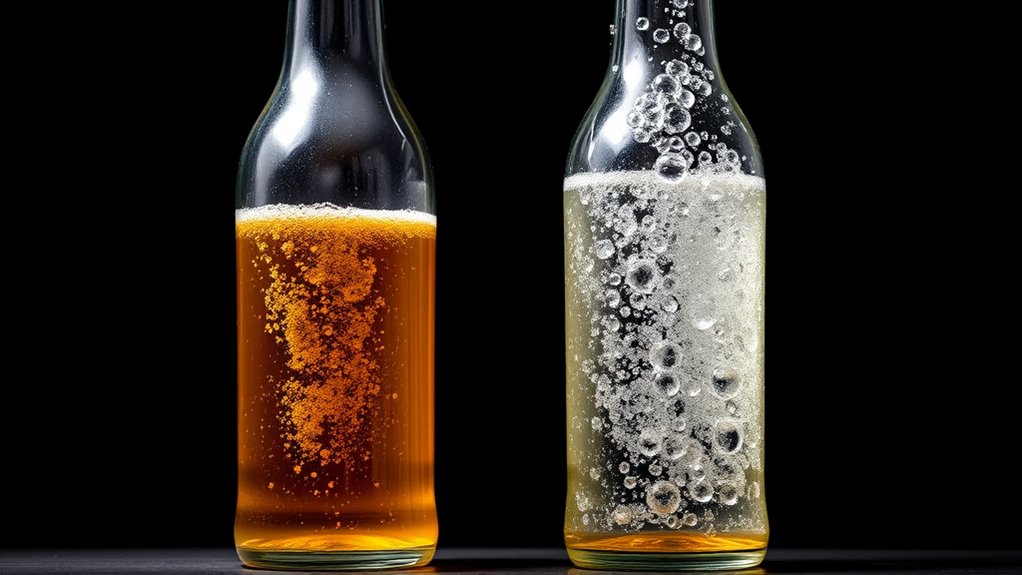
Natural carbonation through bottle conditioning not only adds effervescence to your beer but also enhances its overall flavor profile.
Bottle conditioned beers develop yeast-derived characteristics that contribute to complex flavors over time. This process produces finer bubbles, resulting in a creamier mouthfeel and improved foam retention compared to forced carbonation. Additionally, natural carbonation helps retain volatile aroma compounds, creating a more aromatic beer. Styles like Saison particularly benefit from these rustic, traditional flavors, making them more appealing to enthusiasts. Moreover, dry hopping during secondary fermentation allows for the extraction of essential hop oils, further enhancing the aromatic qualities of the beer. By choosing bottle conditioning, you’re opting for a richer, more flavorful experience in your brewing endeavors.
Helpful Hints:
- Experiment with different priming sugars.
- Store bottles at ideal temperatures.
The Impact of Yeast Activity on Beer Quality
Yeast activity plays a pivotal role in determining the quality of beer, especially during the bottle conditioning phase.
Yeast activity is essential for beer quality, particularly during the crucial bottle conditioning stage.
This natural process enhances various aspects of your brew:
- Flavor Complexity: The secondary fermentation creates depth and complexity in flavor.
- Finer Carbonation: Yeast produces smaller, creamier bubbles that improve mouthfeel.
- Aroma Development: As yeast metabolizes sugar, it generates additional aroma compounds, enriching the sensory profile.
Additionally, maintaining yeast viability and purity during this phase is crucial for ensuring a successful fermentation process and preventing off-flavors.
Shelf Life and Aging Potential
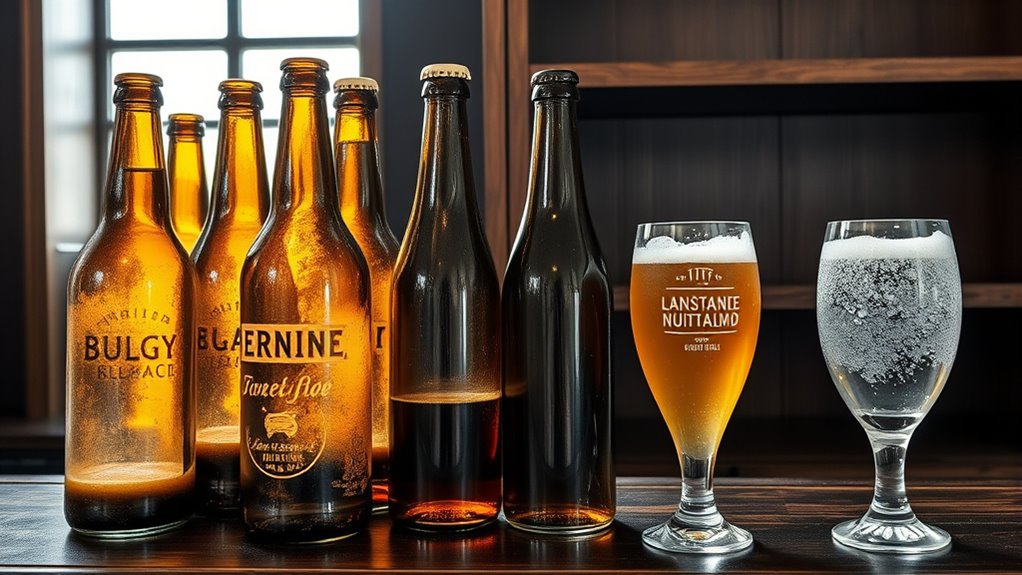
When you consider the shelf life and aging potential of beer, bottle conditioning offers distinct advantages over other methods. The natural fermentation process allows live yeast to contribute to flavor stability over time, enhancing the beer’s character.
Unlike forced carbonation methods, bottle conditioning creates a sediment barrier that limits oxidation, preserving freshness. This means your beer can age gracefully, developing complex flavors that improve its richness.
Additionally, the natural carbonation produces a smoother mouthfeel and finer bubbles, enriching the drinking experience as the beer matures. Overall, choosing bottle conditioning can greatly extend your beer’s shelf life and aging potential. Furthermore, the development of aromatic and flavor compounds during this process can significantly enhance the beer’s complexity over time.
Clarity and Visual Appeal of the Brew
Clarity often plays a significant role in the overall perception of beer, influencing both its appeal and marketability.
Clarity significantly impacts beer perception, shaping its marketability and visual appeal.
When comparing bottle conditioned beer to force carbonated beer, consider the following:
- Bottle conditioned beers may appear hazy due to sediment from natural carbonation.
- Force carbonated beers typically showcase greater clarity, as sediment is filtered out.
- Some consumers appreciate the rustic charm of sediment, linking it to traditional brewing processes.
While clarity can enhance visual appeal, many craft beer enthusiasts value the authenticity and character of bottle conditioned options, embracing their unique aesthetic as part of the brewing experience.
Brewer Preferences and Experiences
Brewers’ choices often reflect their philosophies and techniques, particularly when it comes to carbonation methods. Many prefer bottle conditioning for its ability to enhance the flavor profile through yeast fermentation, creating unique characteristics.
Homebrewers often enjoy finer bubbles and improved foam quality, leading to a more satisfying mouthfeel compared to force carbonated beers. A poll showed that 53.3% of brewers favored bottle conditioning, emphasizing its artisanal appeal.
Additionally, personal experiences indicate that bottle conditioned beers possess better aging potential, allowing flavors to develop over time. Ultimately, it comes down to personal preference, highlighting diverse approaches within the brewing community. Moreover, proper sanitization of brewing equipment is vital to ensure that these unique characteristics are not compromised by unwanted microorganisms during the fermentation process.
Cost and Time Considerations in Brewing Methods
Cost and time considerations play an essential role in deciding between bottle conditioning and force carbonation methods in brewing.
- Bottle conditioning is generally more cost-effective, requiring only sugar and bottles.
- It takes 1-2 weeks for carbonation, making it time-consuming compared to the hours needed for force carbonation.
- For those without kegging systems, bottle conditioning is a more accessible option.
While the initial investment in force carbonation may seem appealing, the flavor complexity achieved through natural carbonation in bottle conditioning often proves to be a better value over time.
Additionally, utilizing bulk purchases of base malt can further enhance the cost-effectiveness of homebrewing while bottle conditioning.
Efficient methods can streamline bottling and minimize time concerns, enhancing the overall brewing experience.
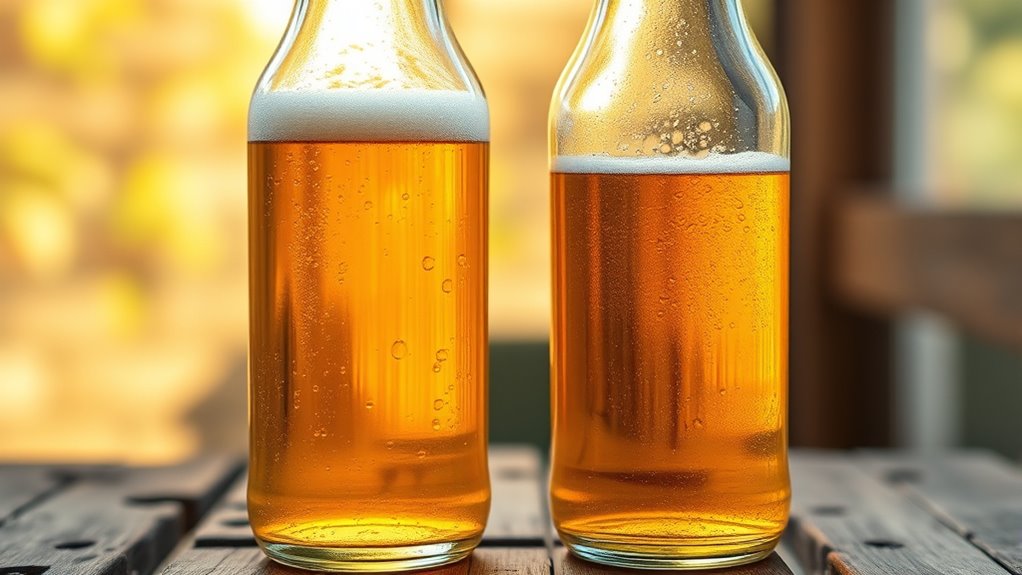
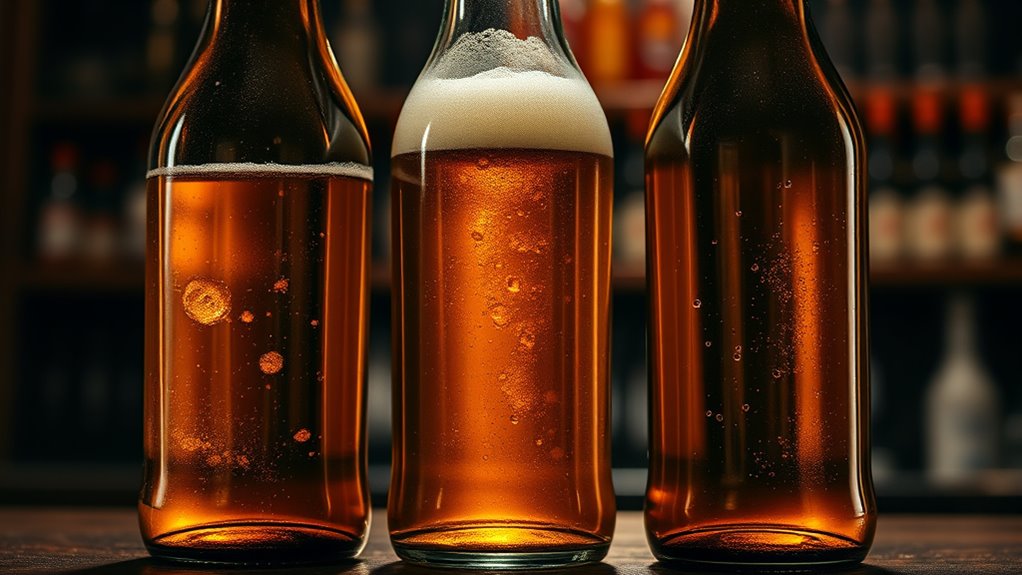
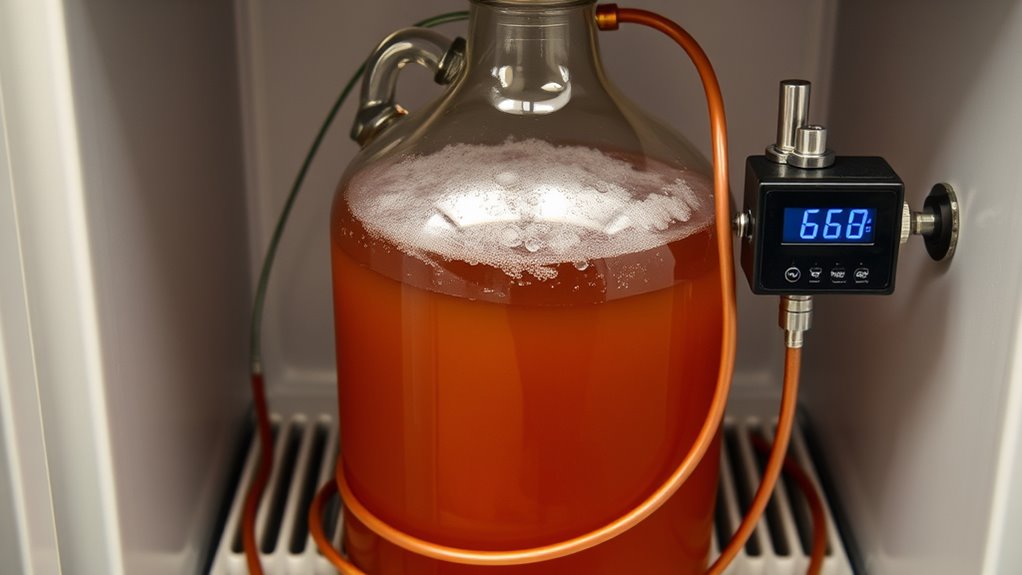
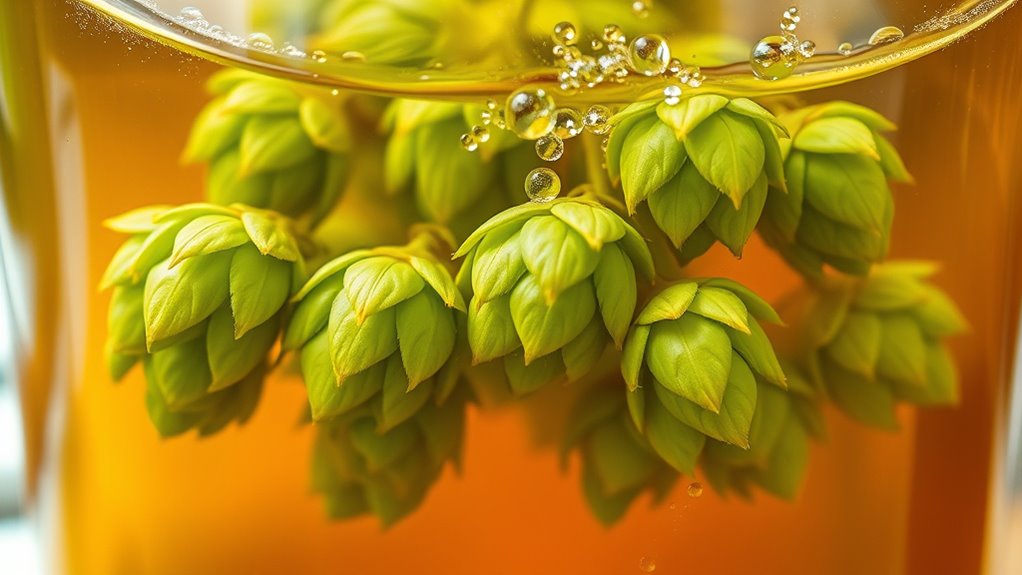
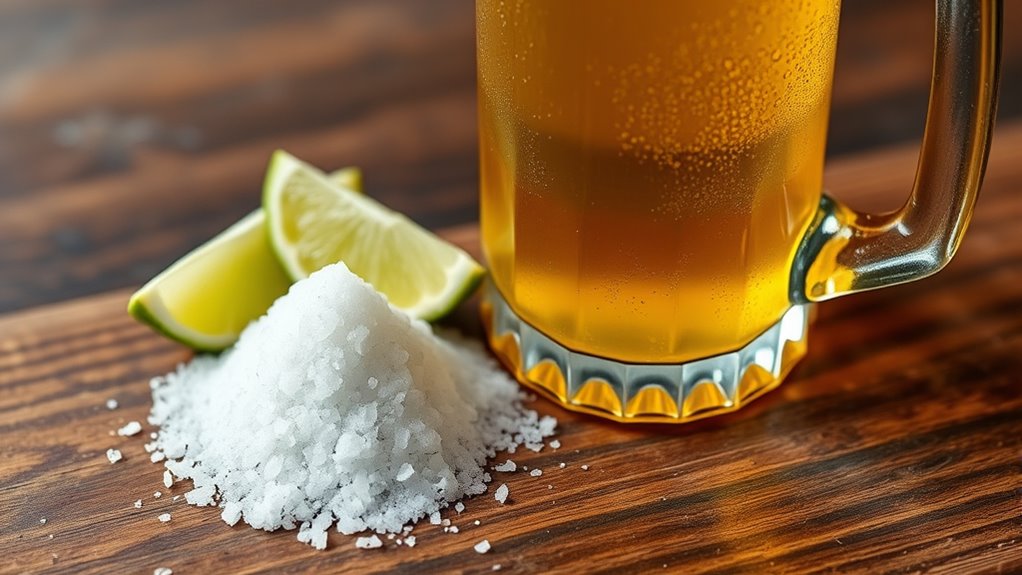
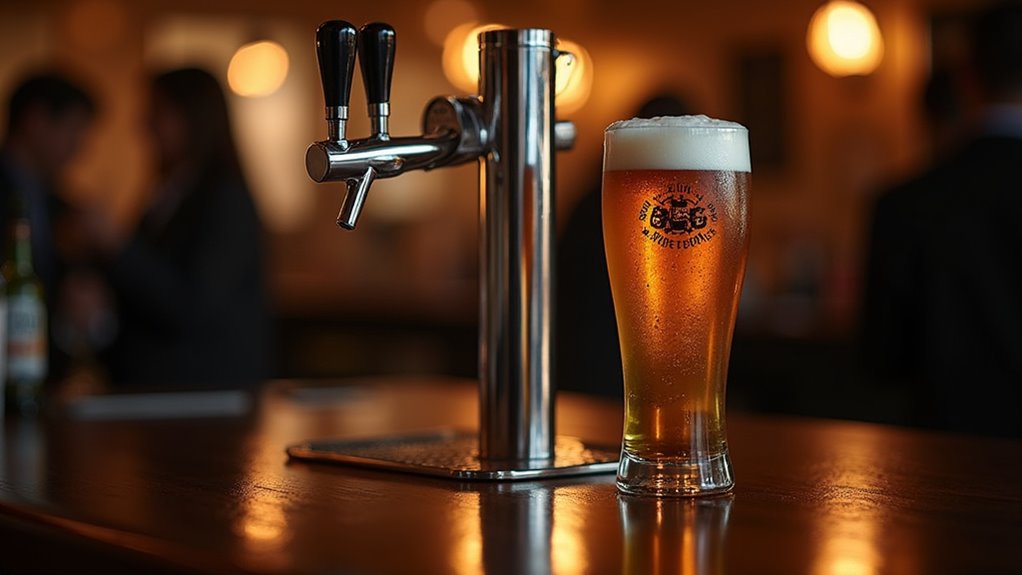
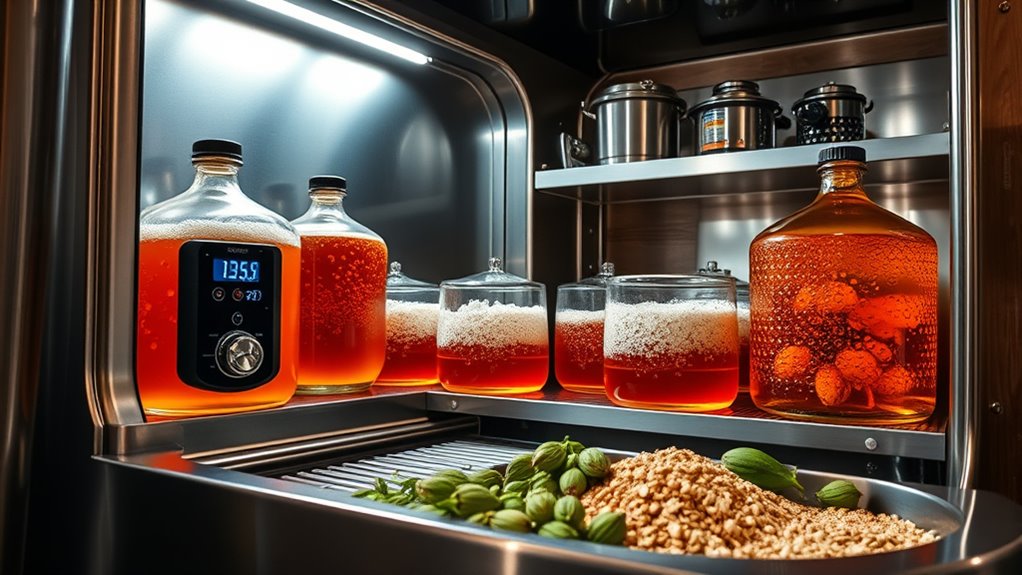
1 comment
Comments are closed.